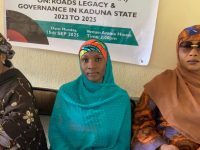Jihadist Surge, State Retreat: The Villages Lost in Mali’s Crisis

In the shadow of the Sahel’s worsening security crisis, entire villages in Mali’s central and northern regions have been wiped off the map—not by bombs or bulldozers, but by the silent march of fear. From Kassa Saou to Kodian, communities that stood for generations are now ghost towns, emptied by jihadist threats and a state too fractured to protect its own. The once-fertile lands now echo with memories of oral traditions, ancestral rites, and lost hopes—buried in haste, abandoned at gunpoint.
In Koro district, near Mali’s border with Burkina Faso, two villages have been “emptied,” according to an aid worker who asked The Africa Report not to use his name.
“There’s no one left in Kassa Saou or Kassa Berda,” he said. “These were villages that had existed for generations. But what can people do? They can’t live at gunpoint.”
The list of abandoned villages in Mali is growing and includes Bodio, Diombolo Kada, Yawakada, Doudiourou Tile, Dégénéré Bogolo, Tegourou, Libbé-Habbé, Ouro-Emé, Djewagou, Nagadourou, Siratintin, Seretomonie, Drimbe, Noubori and Kassa.
Around the town of Diafarabé, where a massacre by the army on May 12 was followed by a terrorist blockade, the inhabitants of Darou, Tielembéya, Barké Daga and Kara also were forced to flee.
In the Ségou region, closer to Mali’s capital, Bamako, several villages in the Tominian district — Teole, Sondo, Tassila, Koredaga, Tilihan, Kiri, Soumadougou, Kere-Coura, Kaladaga, Beledaga, Massadougou, Tiouga, Lafiala and Kodian — “exist now in name only,” a local source told The Africa Report.
“Every abandoned village is a part of our collective memory that disappears,” the aid worker said. “The oral traditions, the funeral rites, the planting and harvest festivals … all of that stays buried in the land we leave behind.”
In a 2024 report, Mali’s National Directorate for Social Development noted more than 700,000 internally displaced people, mostly from the northern and central regions.
A surge in attacks in May and June marked one of the deadliest periods in the Sahel’s recent history. Attacks by JNIM killed more than 850 people across Burkina Faso, Mali and Niger in May, a rise from the average rate of killings of around 600 in previous months, according to data from crisis-monitoring group the Armed Conflict Location & Event Data project.
The Soufan Center, an independent security research organization, said JNIM launched a July offensive in Mali targeting urban centers that signaled a shift from its previous tactics of staking out rural territory.
“The uptick in JNIM’s operational tempo over the last year has further undermined the junta’s narrative of restored security following the withdrawal of international forces after its 2021 coup,” the center wrote in a July 15 brief. “It may be probing the state’s defenses as part of a broader campaign of territorial contestation.”
Despite several recruitment drives over the past five years, Mali’s army is understaffed. Security experts say this has left Mali vulnerable, as the intervention of Russian mercenaries has failed to rein in advancing terrorism, and the Kremlin appears more interested in the economic benefits it can reap.
Aly Tounkara, who lectures on defense and security at the University of Bamako, said junta leaders in the Sahel are making a mistake with a military-only approach.
“States seem overwhelmed, and they are genuinely unprepared to prevent coordinated attacks. The threat stalks all states in the Sahel and beyond and will certainly have economic and social repercussions in surrounding countries,” he told Al Jazeera. “We are in a dangerous and vicious circle, and the attacks will continue in the long term. Those who are not aware of this should be convinced.”
In rural areas beyond state control, JNIM and ISSP govern with their own tax structures, justice systems and enforcement mechanisms.
“When a commune loses half its villages, it becomes administratively unviable,” a civil servant in the Timbuktu region told The Africa Report.
For longtime residents such as Soumaguel, there is always hope they can return someday.
“I’ve kept the keys to my house,” he said. “I tell myself that one day I’ll go back to Dagodji and we’ll rebuild our village.”
- With additional reports by ADF










